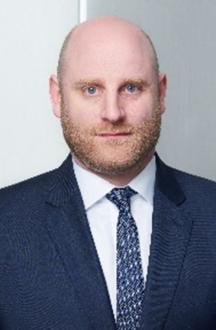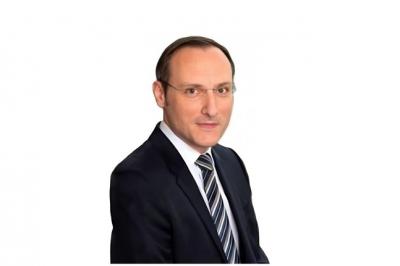M&G Investments on Navigating Challenging Markets in 2023 via the Global Macro Investment Strategy

Michael Dyer of M&G Investments
Jan 30, 2023
A Hubbis Thought Leadership Discussion - In Association with Exclusive Partner: M&G Investments
In partnership with M&G Investments, Hubbis held a behind-closed-doors discussion on November 17 in Singapore that focused on how investors can navigate challenging and volatile markets in the quest for performance via M&G’s global macro investment approach. The guests were all private bank, insurance and wealth management gatekeepers, CIOs and other decision-makers working in Singapore.
One of the M&G hosts was Joseph Wong, who is based in Hong Kong. And the main speaker for the event from M&G was Michael Dyer, the Hong Kong-based Investment Director in the Multi-Asset team, who explained his approach to the challenging current market conditions and how the M&G global macro investing strategy has been able to profit from 2022’s turmoil in equity and bond markets, and how they plan to continue this positive performance in 2023.
Dyer joined M&G in 2019, prior to which he worked at Neuberger Berman, also in Hong Kong, as a Client Portfolio Manager for multi-asset, liquid alternative and equity investments and before that with Morgan Stanley Investment Management in London, in multi-alternative and hedge fund portfolio solutions.
Overall, he has over 21 years of experience working in the investment management industry. He graduated from University of Leeds and holds the Chartered Financial Analyst (CFA) and Chartered Alternative Investment Analyst (CAIA) designations.
This is a brief summary of some of Dyer’s many valuable insights and observations and is designed to provide a snapshot of his and M&G’s views for the USD4.3 billion global macro strategy M&G runs.
Introductory Words from Joseph Wong
Joseph Wong, M&G’s Head of Intermediary Channels, based in Hong Kong, opened proceedings by briefly introducing M&G, noting that the firm was founded more than 120 years ago in London and had approaching USD424 billion in AUM [as of 30 June 2022], spread across public markets, and also private markets, including real estate, infrastructure, private credit.
He introduced Michael Dyer, explaining how the Asia market is of considerable and rising importance to M&G, and welcoming the opportunity to reach out to the assembled wealth management and gatekeeper community there.
Selected Insights & Observations from Michael Dyer:
Taking directional positions
Dyer explained that his mission at the event was to focus on their investment approach for their global macro strategy, which he described as a directional multi-asset strategy, focusing on liquid discretionary investment across equities, fixed income, credit, emerging markets, FX, but not commodities.
“We take very directional positions in any of those markets, and typically through futures,” he told guests. “The ability to be flexible, to pivot the portfolio and to be dynamic and opportunistic during periods of volatility is very valuable for investors.”
Taking calculated bets amidst uncertainty, and staying flexible
He explained they are seeking to generate absolute returns, primarily investing in the liquid alternatives bucket.
“Our position is that we do not believe there is ever real clarity in markets,” he explained. “We believe markets continually lurch from one set of stories to another set of narratives. We believe that the ability to forecast what might happen tomorrow is exceedingly difficult, if not impossible. Accordingly, we aim to respond to where we think the best odds are in the market at any one time. The core of the approach is the ability to be flexible.”
He added that they tell investors the portfolio they are buying into is the future portfolio, which is hugely different from buying into, for example, a China Fund or a US small cap equity fund where the selection of portfolio holdings changes slowly over the years. “We move in and out, we switch around on a tactical basis, often within a matter of weeks if we like,” he said.
The right call – rates have indeed surged, surprising many, actually most
He explained that in 2022, their smart calls had centred on being short US rates throughout the year and shifting duration exposures. He explained they took their approach back quite early in 2021, when few investors and experts believed rates were going higher. “We are not geniuses, we didn't foresee that inflation was going to hit nine or ten per cent, but we did see consensus so tightly grouped around one particular outcome that it made sense to investigate other outcomes.”
The unconstrained portfolio
Their completely neutral position is 100% cash, and indeed in late September for a matter of three weeks, he said they were actually 100% cash, but not for long - by the time of this event, they were roughly 40% invested. “We closed the short position in US rates and were trying to work out what would come next after the UK gilts market blew out, and then we decided to reengage and go long,” he reported.
Good days for rough water sailing
Dyer told guests that, in his opinion, these are currently good conditions for their approach, as there is so much uncertainty and unpredictability around.
“Today, you need to be more reactive,” he said. “What made money this year is not going to necessarily make money next year. There will probably become a time next year when it gets sensible to get long equities again, indeed we are very modestly long equities now, adding that element of opportunism that clients are so often seeking, and we are going to be adding to our equity exposure. “
Politics matter, of course, but the mission is to look beyond the ‘noise’
Dyer explained that while geopolitics and political change and major decisions matter greatly, from their perspective in adapting the portfolio, they try not to second guess events, instead seeking to look beyond the immediate ‘noise’ and see the implications for asset prices, for example taking positions in currencies and perhaps through various government bonds.
Contrarian does not mean opposite
He also explained that they are contrarian investors, but that they do not simply take the opposite views from the market. “As macro managers, we are directional, and we aim to be long when the market is going up, and short when the market is going down,” he said. “We will never be that perfect, but we should be able to perform in both environments. And we spread our bets to achieve those goals. And we typically shape our portfolio to demonstrate the flexibility to do well when there are inflection points in the markets.”
In hindsight, for example, he added, everyone should have been short rates last year, but they were not, for a variety of reasons. “That type of scenario is where we can take opportunities,” he said. “Our skills are based on our ability to continually think about how we can win, and how we can manage risk, and making sure we do not get on the wrong side [of trades].”
In a world addicted to TV ‘series’, M&G takes an episodic approach of its own kind
“We take what we call the ‘episodes’ approach,” he explained. “We see that tomorrow is inherently uncertain, and it is going to surprise us all in some way. Accordingly, what is it that we can look at today that gives us the best reading of where the odds are in terms of investments. And we came up with two pillars. One is valuation, which is rather straightforward. And number two is behaviour or market psychology.”
For valuation, they look at a straightforward valuation comprising the typical metrics.
But most of the real work is around the behaviour side. “We are looking for those opportunities where the market has become so certain that this one factor is going to drive returns, that we say, actually, that is something we want to pick a fight with, where we think there is mispricing. When we see particular episodes on the downside, we might step in and look if there has been a shift in the fundamentals, to see if that downshift is justified. Hence, our research is much more around understanding, and that is a bit more ‘touchy-feely’.”
He cited the example of rates in the US. “We sat there in March 2021, and we saw a marked asymmetry in rates. We saw that rates and equities were expensive and that we wanted to be short both. But we continually adapt. We are hugely discretionary. not consensus driven, and internally we are hugely collaborative and collegiate in approach.”
He expanded on those comments, noting that their skill is balancing valuation and behavioural judgements.
“For example, in 2021 the S&P 500 looked super expensive, but there was no behavioural signal to say that it was trading expensively. Conversely, the S&P 500 today and most equity markets, they look cheap versus 10-year averages, but the point is that the next 10 years might be different, so we are not trying to come up with a valuation but trying to understand how sensitive it is to shift that valuation right now. The result is it's hard for us to get long equities, even though they're cheap [historically], because there could be further pressure on that valuation.”
Could the US Federal Reserve pivot? It is possible…
Dyer observed that [as of late November] they were hopeful of a Fed pivot on rates.
“Every time the Fed pivots, equity markets have boomed again,” he remarked. “We are not where we were in 2003 when every UK pension fund seemed to be talking about immunising their bond portfolio and never investing in equities again. But what we think we are seeing in equities right now is cheap valuations and no capitulation type behaviour, but it could also be a much worse landing, hence we are about 15% equity and if there is a really soft landing, we are going to underperform peers in the next year, and we'd have to build up that equity exposure pretty quickly.”
Ultimately, he said, their focus is to find cheap assets about which markets are generally fearful, and then feel their way to the best entry points. Or they hunt for those situations when investors keep buying assets that are already expensive, opening the doors wider to him and his team taking their contrarian positions.
Remember - forecasts and outlook papers tend to be wrong much of the time
Dyer explained that as analysts, asset managers and marketing teams make their predictions in late 2022 for 2023, remember that by Valentine's Day on February 14, most will have been proven wrong.
“The world does not operate in calendar years,” he observed, “and in our view, we should always be trying to understand what the consensus outlook is, and then see where the opportunities are to bet against it. We will often miss momentum trades, but our objective is to be in things early, and then we probably leave a bit early too.”
He added that for the 2023 outlook, few seem to have any idea what their view will be, except perhaps that hopefully, it is not as bad as 2022.
Current positioning – cautious, under-invested and patiently optimistic
Dyer reported to guests that they are currently quite under-invested, with about 15% long equity, and largely in cheaper markets such as the UK, Japan, zero from the US, a small amount in China. Additionally, roughly 25% of allocations had been long US Treasuries, until a very recent trimming to 12.5% to take profits. And then there are multiple currency carry positions in high yielding currencies like the Polish Zloty, Hungarian Forint, and short positions such as the Japanese Yen.
“Actually, we are exercising what we call patient optimism, and we are only about 40% invested currently, so we are mostly in cash,” he reported. “Cash is dry powder and represents opportunity for us. Do we know what the opportunity will be? No, and that is why we wait, patiently optimistic. But we do not sit on so much cash for long based on our 20-year history; we are only there for a matter of weeks typically.”
His final comment was for investors to not be too excited about the immediate future. “Stay calm, be patient,” he told guests. “I think equities are going to be a buy next year at some point.”
Important Information
The value of the investment's assets will go down as well as up. This will cause the value of your investment to fall as well as rise and you may get back less than you originally invested. Past performance is not a guide to future performance The views expressed in this document should not be taken as a recommendation, advice or forecast.
In Singapore, this material is issued by M&G Investments (Singapore) Pte. Ltd. (company registration number: 201131425R), regulated by the Monetary Authority of Singapore. In Hong Kong, this material is issued for Professional Investors only by M&G Investments (Hong Kong) Limited, located at Unit 1002, LHT Tower, 31 Queen’s Road Central, Hong Kong. If you have any questions about this material please contact M&G Investments (Hong Kong) Limited. Not for onward distribution. No other persons should rely on any information contained within. All forms of investments carry risks. Such investments may not be suitable for everyone. The information contained herein is provided for information purposes only and does not constitute an offer of, or solicitation for, a purchase or sale of any investment product or class of investment products, and should not be relied upon as financial advice.

Investment Director at M&G Investments
More from Michael Dyer, M&G Investments
Latest Articles






